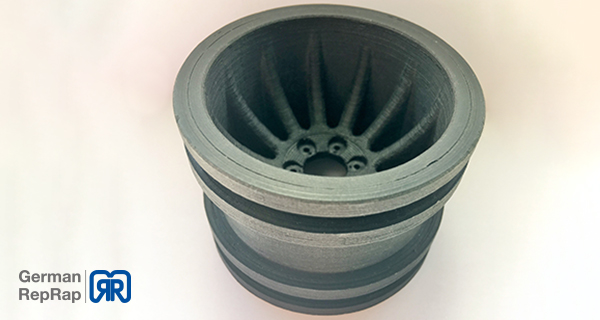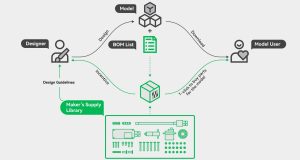Feldkirchen b. München, May 2018 – German RepRap responds to the demand for high-temperature materials on the market and adds PEKK Carbon to their filament portfolio. The new PEKK Carbon is heat resistant up to 260 ° C / 500 °F, has many interesting technical and mechanical properties and is therefore ideal for applications in the automotive, aerospace and industrial manufacturing industries.
PEKK (polyether ketone ketone) is a high temperature filament from the family of so-called PEK (polyether ketone) materials, which also includes PEEK (polyether ether ketone). The material brings different mechanical and technical properties with it. For example, it is resistant to almost all organic and inorganic chemicals and very resistant to abrasion due to its high strength. Due to its high resistance to chemicals, PEKK can be used where the parts are exposed to many fuels, lubricants and various types of acids. Low outgassing allows the usage in confined spaces and sensitive environments. This is important for aerospace, such as satellites, where materials under vacuum may not outgas. In addition, PEKK carbon print objects are particularly suitable for applications in which a high load capacity is required, but in addition the weight factor plays a decisive role. The extraordinarily high temperature resistance makes it interesting for usage in the automotive industry. The parts can easily withstand temperatures in engine compartments or bonnets. In addition to aerospace and the automotive industry, the material is also suitable for applications in industrial manufacturing and the oil and gas sector.
The classification for flame resistance and fire safety is based on UL94 VO classification.
The additive production of small series brings additional economic benefits. For example, in traditional manufacturing a very large amount of the material must be purchased, which is then put into the final shape by the use of mechanical processes. This is associated with a high amount of material wear and relatively long lead times. Thanks to 3D printing, the components are lighter, bring optimized surface finish and can therefore be produced with less material consumption. In addition, the parts can be made on demand, because even smaller production quantities are economical, resulting in lower storage costs and higher profitability.
Subscribe to our Newsletter
3DPResso is a weekly newsletter that links to the most exciting global stories from the 3D printing and additive manufacturing industry.




























